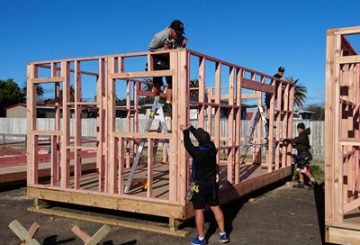Giáo dục đại học của New Zealand phải đối mặt với một cuộc khủng hoảng sau đại dịch. Tài trợ thiếu hụt của chính phủ đang khiến các trường đại học phải cắt giảm việc làm lớn. Điều này đe dọa việc nghiên cứu ngôn ngữ châu Á và châu Á ở cấp đại học.
Trong những năm gần đây, các trường đại học New Zealand đã xây dựng một nền tảng vững chắc trong nghiên cứu châu Á. Tuy nhiên, AUT, Otago, Massey và Victoria University of Wellington hiện đang giảm hoặc có khả năng kết thúc các chương trình bằng tiếng Nhật, Trung Quốc và Châu Á. Điều này là do vấn đề ngân sách.
Mặc dù cắt giảm, 79% người New Zealand trong một cuộc khảo sát năm 2021 cho biết họ tin rằng mối quan hệ với châu Á là điều cần thiết cho tương lai của đất nước. Bảy trong số 10 đối tác thương mại hàng đầu của New Zealand là ở châu Á.
Mặc dù Trung Quốc là đối tác kinh tế quan trọng nhất của New Zealand, trong năm năm qua, chúng tôi đã thấy sự sụt giảm trong nghiên cứu tiếng Quan Thoại. Tuy nhiên, điều này sẽ không dẫn đến việc cắt giảm các chương trình của Trung Quốc. New Zealand cần sự hiểu biết của riêng mình về châu Á. Cũng nên nhớ rằng châu Á không chỉ là Trung Quốc. Ngôn ngữ Hàn Quốc và Nhật Bản vẫn phổ biến, và New Zealand có nguy cơ tụt lại phía sau các quốc gia khác.
Nước này trước đó đã bỏ các nghiên cứu Indonesia từ một số trường đại học. Điều này làm mất đi mối quan hệ tiềm năng với Indonesia, một quốc gia châu Á quan trọng.
Thiếu kinh phí đang khiến các trường đại học đánh giá các nghiên cứu châu Á theo số lượng sinh viên. Tuy nhiên, các khóa học này giúp sinh viên từ các lĩnh vực khác nhau hiểu về châu Á. Việc cắt giảm cũng có thể gợi ý cho người New Zealand gốc Á rằng họ không được coi trọng.
Việc kết thúc các nghiên cứu châu Á và các chương trình ngôn ngữ có thể có những tác động tiêu cực lâu dài. New Zealand có nguy cơ trở nên cô lập và kém cạnh tranh hơn. Đất nước này thậm chí có thể phụ thuộc vào các nguồn bên ngoài để hiểu châu Á, trong thời đại thông tin sai lệch ngày nay, có thể nguy hiểm
.




























































